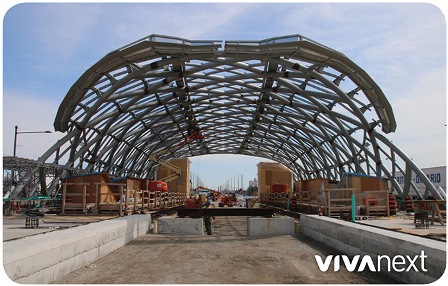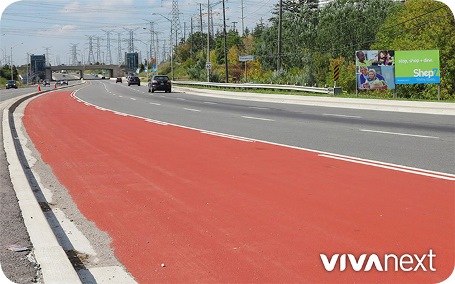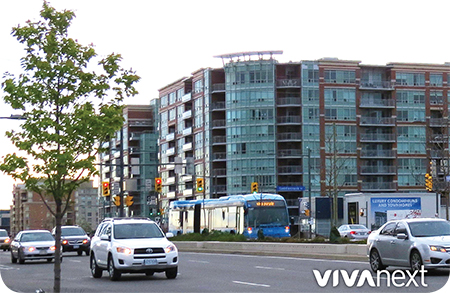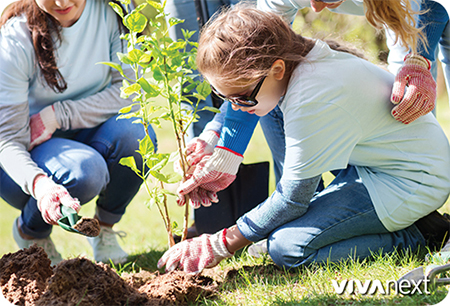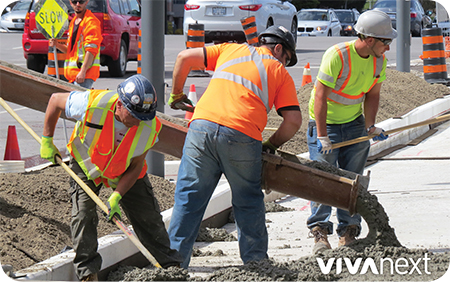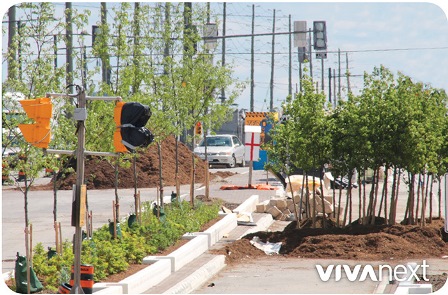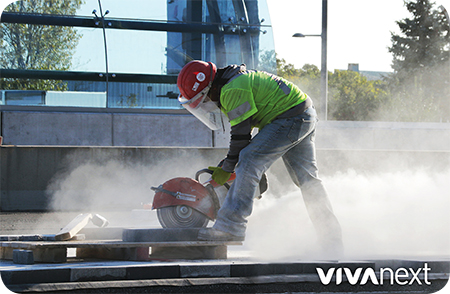Have you ever walked past those construction sites surrounded by wood walls, and wanted a peek inside to see what’s being built? Curiosity is good – it helps us to move forward and to try new things. In York Region right now, we have a chance to sneak a peek at what’s to come.
In some cases, it’s right out there in the middle of the road. Communities with rapidway construction underway can see how their street will look once it’s done, by looking at Highway 7 East in Markham and Richmond Hill or Davis Drive in Newmarket. It’s more than bus lanes – it’s new utilities and infrastructure like bridges, tree-lined sidewalks and where possible, bike lanes.
In Vaughan Metropolitan Centre [VMC], we can see the transit hub on the way in the next year that will include a super-sized vivastation in the centre of Highway 7, linking to a YRT bus terminal via an underground pathway and above ground plaza, and connecting directly to the new subway platform below via escalator and elevator.
We can even get a peek at the new subway stations that are part of the Toronto-York Spadina Subway Extension project. TTC is hosting a Doors Open Toronto event this Saturday only, at the new Downsview Park Station and York University Station, set to open for service at the end of 2017. Information about the event is available on the project website, and if you can’t go, be sure to take a look at the photos posted by project staff on their Flickr site. And check out this TTC video of the future subway ride from Downsview Park to VMC, recorded last year to celebrate the final tracks being laid.
So if you’re curious about the subway, be sure to visit Downsview or York University Stations this Saturday. And if you’re curious about transit in York Region, feel free to ask us a question or follow us on Twitter, Instagram or Facebook.

